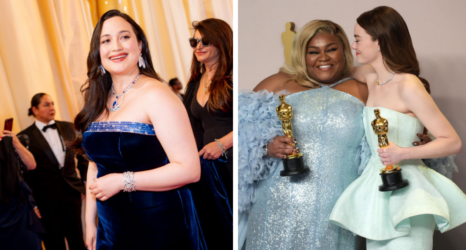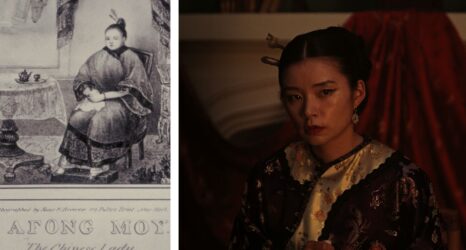The most powerful words in director Catherine Tambini’s new documentary, Dance with Me, are deceptively simple, spoken by a 15-year-old girl. “My life is not the same as my [best friend’s],” Veronica explains, “but it’s perfectly normal for me.” Ambitious and articulate, Veronica also happens to be living with cerebral palsy, a condition that affects her balance, muscle control and gait, but not her fierce personality or her confidence that no one should feel left out in life.
Dance with Me, currently in post-production and due to be released later this year, follows Veronica and three other children through their participation in Dancing Dreams, a New York-based nonprofit directed by Joann Ferrara.
Channeling her dual interest in dance and pediatric physical therapy, Ferrara founded the program to give disabled children a physical and creative outlet they’re not often afforded in other arenas. Ferrara was inspired to create the program after Veronica, at age 5, said to her, “I wish I could be a dancer but nobody wants me.”
The other featured kids and their teenaged helpers—typically abled high school students who volunteer with the program—demonstrate their strength and passion for the project throughout the film. Their parents and siblings describe how the young dancers have been challenged by and had to negotiate their disabilities. The kids, though? They’re just normal kids, which is largely the point:
Feisty Alexandria, 5 (accompanied by her twin sister, Maya), declares with the zeal of children her age, “I don’t want to lose. Sometimes I win, and sometimes I win!”
The charming Jake, 8, who convinced Ferrara to start a boy’s division of the dance program and mentors some of the younger dancers, attacks the playground with glee and fights with his mom over whether he can play basketball with a group of older boys.
Caitlin, 12, argues with her twin sister, Allison, over how to set the table correctly and hopes to one day learn how to ski independently of her adaptive instructors.
Producer Elizabeth Hemmerdinger, who was already a supporter of Dancing Dreams before she became involved with the film, explains that the children just want to be seen in their best light. Tambini, on the other hand, admits that her perspective shifted profoundly over the course of the project. “I didn’t know anything about kids with disabilities. I’m one of the ones who looked the other way and never wanted to get involved.”
Now, Tambini says she’s been deeply touched by the indomitable spirit of these children. But she’s also careful to reiterate Veronica’s point: “Their lives may be a different type of normal than yours or my life, but it’s normal for them.” If we look to them as inspirational it should be because they’re exceptional and inspiring children, not because they happen to live with disabilities.
Headed up by an almost all-female crew, including executive producer Laverne Berry, a top New York attorney, and Hemmerdinger, who recently produced the documentary Elaine Stritch: Shoot Me, Dance With Me benefits from its creators’ attention to detail and patience. Honest, down-to-earth and heartfelt, the film reflects the ordinary lives of its subjects alongside the extraordinary impact of Dancing Dreams on all those who participate.
Tambini’s hope is that the film will help change viewers’ perceptions about people with disabilities, allowing us to “see these children for who they are and not look at them as a disability. They all want to be seen. They all want to be heard.” They are special not because of their disabilities, but because they want to “express themselves creatively,” she asserts. “That moment when they’re on stage means the world to them…you can just see them blossoming.”
Dance With Me is scheduled for release later this year and is still looking for financial resources to finish post-production. You can find more information and a link to donate on the film’s website.
Photos courtesy of Dance With Me





